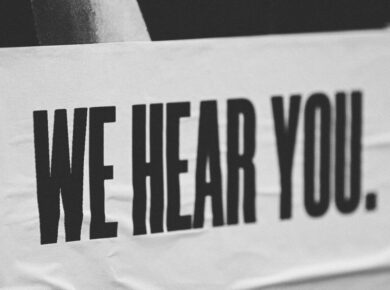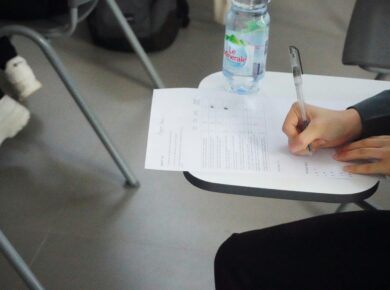Reading problems have reached such an alarming dimension that students now leave school without knowing how to perform simple reading tasks. Many can hardly even read employment applications (Conley et al, 1992).
But this is not without some formal reading tuition having been imparted to them, at least at the primary school level.
This means that the problem is not that they have not learned to read, but that they cannot use reading to engage in a variety of ways of thinking.
Without this ability, our students will be incapable of communicating and surviving in a print-based school environment and a dream print-based society in our developing countries.
The following is therefore a cursory glance into the issue of the reading process, which by definition implies interpretation emanating from the concomitant to reading comprehension and therefore effective reading.
Some hints are given at the end of the discourse to aid reading interpretation, while two exercises are offered as incentives to improve reading skills and to produce a skilful reader.
Some Philosophers’ Definitions
Reading comprehension as a message reconstruction is a central idea of many psycholinguistic models of reading. Apart from this, most scholarly definitions converge on a consensus that reading is an interpretation.
Ruddell (1968) defines reading as ‘’a complex psycholinguistic behaviour which consists of decoding written language units.
It is processing the resulting language counterparts through structural and semantic dimensions, and interpreting the deep structure data relative to an individual’s established objectives.
Put more communicatively, Smith (1971) says reading’’… is an act of communication in which information is transferred from a transmitter to a receiver, whether the reader is a scholar deciphering a medieval text or a child identifying a single letter on a blackboard.
Unoh (1976) regards reading as’’… A cognitive, language processing task. The list is not exhaustive since experts are as varied as their definitions.
But what is essential is that reading should not be conceived merely as primarily a visual task, but rather as word recognition or reproduction of what the author has said.
Rather, it should be seen as a thinking process whose success contributes to the total development of the personality of the reader.
Reading by Definition is the Interpretation
Reading is a mental process that involves the interpretation of signs or symbols as perceived through the sensory organs.
The ability to interpret these symbols is a specific form of learned behaviour which requires grasping meanings through association that has been formed with what is printed. Perhaps some scholarly definition of reading will suffice to emphasise the interpretative nature of reading.
Effective Reading is Reading Interpretation
During the process of reading, printed lines are decoded to discover the meanings of the symbols. It is when this is done that reading is effective.
Effective reading, in effect, is a communication process that involves the processing and interpretation of linguistic cues and symbols and also the use of the higher mental processes of recall, reasoning, evaluation, imagination, problem-solving, etc.
The effective or skilled reader is one who actively explores the materials in search of information. He employs techniques of anticipation and rapid visual and cognitive processing of language in arriving at the meaning of the reading text.
Reading Interpretation is Reading Comprehension
There is no doubt that comprehension is a concomitant of interpretation. If the content is not correctly interpreted, it cannot be comprehended, and unless one comprehends the content, one cannot interpret it. What are the goals of content reading?
Goals of Reading
Conley (1992) identifies three goals of content reading, viz:
- Understanding essential content.
- Learning how to read-to-learn and
- Developing motivation for lifelong reading.
Understanding essential content
Understanding essential content means knowing how to distinguish between what is essential in a subject and what is not. It means learning implications that transform loose facts into meaningful knowledge and then being able to communicate that knowledge in meaningful ways.
Learning how to read to learn
Reading to learn is an interactive process in which meaning is constructed in the mind of the reader. The perspectives and knowledge of the reader interact with the language and perspectives of the writer.
It is a constructive process in the way that readers draw from several sources of information to build their message from sources within themselves.
Indeed, the meaning that readers obtain from written language depends on the nature of their experience with the topic and the degree of affinity of the written language to their awareness of the spoken language (Balogun 1980).
Reading, in this context, is, therefore, an act of communicating with the writer. Motivation implies the positive attitudes and interests developed by the reader, which form the basis for the will to read.
Developing motivation for lifelong reading
Readers who are motivated to perform in a content area have a good self-concept, value what they are learning, and are aware of their subject-specific skills. Differences in motivation are often the result of past school experiences.
Reading Comprehension is Reading for Meaning
Reading comprehension, which is expected to emanate from successful content reading, implies understanding a written text.
This, in turn, means extracting the required information from it as efficiently as possible. It requires the following stages according to Grellet (1990):
- What do we read? Is it novels, letters, books, puzzles, instruction, etc?
- Why do we read? Is it for pleasure, for information, etc?
- How do we read? Skimming, Scanning, Extensive reading or intensive reading?
Reading comprehension is, therefore, the reading for meaning. It is also known as purposeful reading.
- Advice on Reading for Meaning (Reading Interpretation)
- When you read, you must have a clear purpose.
- Purposeful reading saves time for you to spend on other study activities.
- When you study by yourself, you should set your purpose. To develop faster reading, set yourself a time to achieve that purpose.
Before we conclude this chapter, it is worthwhile to take a cursory glance at John Mumby’s hints on skills required in reading to facilitate our reading interpretation.
Skills Required in Reading: (Adapted from John Mumby’s Communicative Syllabus Design) Recognising the script of a language
- Deducting the meaning and use of familiar lexical items
- Understanding explicitly uses the stated information
- Understanding information when it is not explicitly stated
- Understanding conceptual meaning
- Understanding the communicative value (function) of sentences and utterances
- Understanding relations within the sentence
- Understanding relations between the parts of a text through lexical cohesion devices
- Interpreting text by going outside it
- Recognising the main point or important information in a piece of discourse
- Recognising indicators in discourse
- Distinguishing the main idea from supporting details
- Extracting salient points to summarise (the next, an ideal, etc.)
- Selective extraction of relevant points from a text
- Basic reference skills
- Skimming
- Scanning to locate specifically required information
- Transcoding information to a diagrammatic display
Some Hints on Developing Reading Skill
Grellet (1990) has given some hints on developing Reading Skills. The reader is urged to ask questions while reading to perform two functions: (1) to clarify the organisation of the passage and (2) to clarify the contents of the passage.
To achieve (1), i.e. to clarify the organisation of the passage, the reader is urged to ask the following questions, among others: What is the function of the passage in the general organisation of the text? Rhetorical organisation (e.g. contrast, comparison)
Cohesive devices (e.g. link words)
To achieve (2), i.e. to clarify the contents of the passage, the reader is urged to ask the following questions, among others:
Is it a passage presenting the plain fact (direct reference)? Does presenting imply fact (inference)?
Is it urging the reader to deduce the meaning (Supposition)?
Or is it requiring my evaluation?
Summary and Conclusion
We have learned that, by definition, reading is interpretation. Except at the stage of learning to read, no reading takes place effectively without interpreting the content.
It is when the reader comprehends what he reads that he can interpret, and Vice versa. The goal of content reading is to learn how to read to learn and not merely learn to read.
Generally, reading must be purposeful, in which case, the reader reads for meaning. Let us conclude with the following from an expert, Francoise Grellet (1990). Meaning is not inherent in the text.
Each reader brings his own understanding to what he reads based on what he expects from the text and his previous knowledge.
This shows how difficult it is to test competence in reading comprehension and how great the temptation is to impose one’s own judgment on the learners. Read further on this page.









